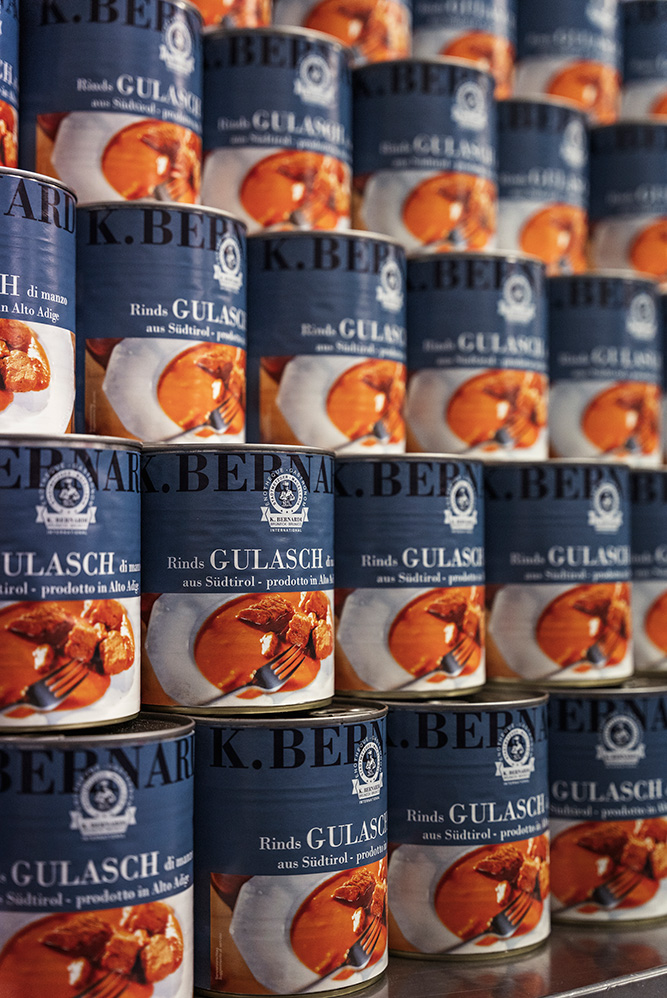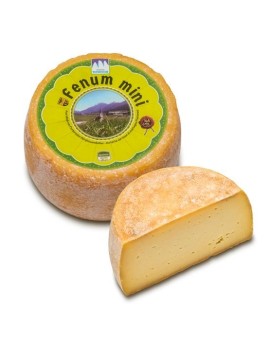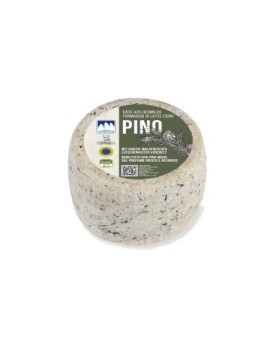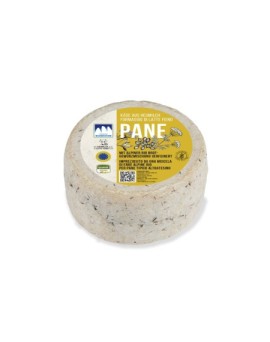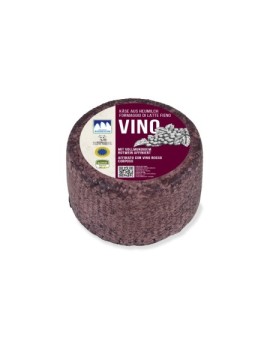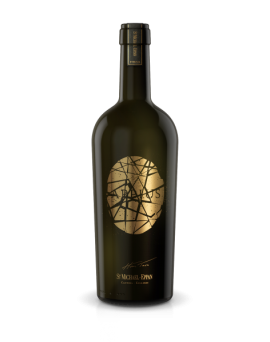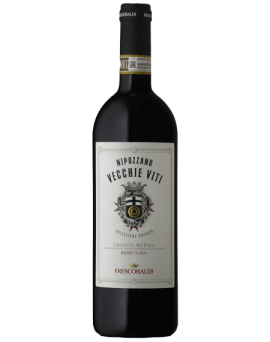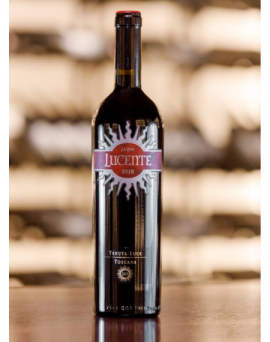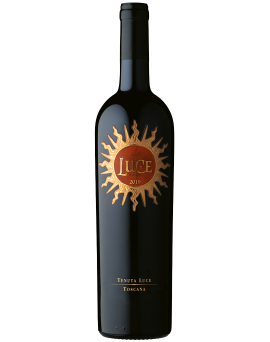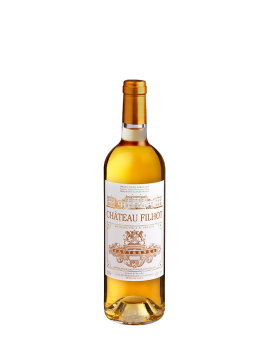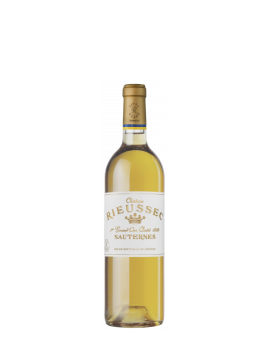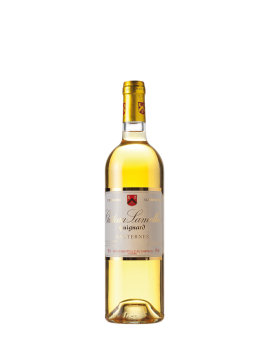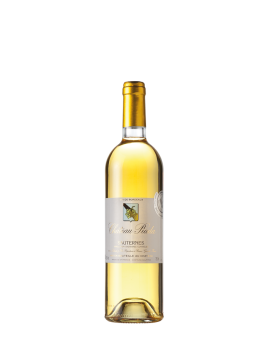Basket
0
Pino maid from haymilk TSG...
Made from hay milk TSG.<br /><br />Soft cheese 50% fat in dry matter.<br />Store at +1° to +10°C - shelf life at least 60 days from date of packaging<br /><br />Ingredients: pasteurised hay milk TSG from South Tyrol, cultures, salt, rennet, South Tyrolean mountain pines<br /><br />Energy: 1.609 kJ / 388 kcal<br />Fat:32 g<br />of which saturated fatty acids: 21 g<br />Carbohydrates: 0 g<br />Sugar: 0 g<br />thereof lactose*<0.1 g<br />Protein: 25 g<br />Salt: 1,2 g<br />* lactose free: The content of lactose under 0,1% is characteristic of many aged cheeses, because the lactose is naturally broken down in glucose and<br />galactose. Those were partly further reduced during the production and aging of the cheese.<br />
Price
€12.90
Bread maid from haymilk TSG...
Made from hay milk TSG.<br /><br />Soft cheese 50% fat in dry matter.<br />Store at +1° to +10°C - shelf life at least 60 days from date of packaging<br /><br />Ingredients: pasteurised hay milk TSG from South Tyrol, cultures, salt, rennet, bread spice (bread clover, coriander, caraway, fennel, aniseed)<br /><br />Energy: 1.609 kJ / 388 kcal<br />Fat:32 g<br />of which saturated fatty acids: 21 g<br />Carbohydrates: 0 g<br />Sugar: 0 g<br />thereof lactose*<0.1 g<br />Protein: 25 g<br />Salt: 1,2 g<br />* lactose free: The content of lactose under 0,1% is characteristic of many aged cheeses, because the lactose is naturally broken down in glucose and<br />galactose. Those were partly further reduced during the production and aging of the cheese.<br />
Price
€12.90
Wine maid from haymilk TSG...
Made from hay milk TSG.<br /><br />Soft cheese 50% fat in dry matter.<br />Store at +1° to +10°C - shelf life at least 60 days from date of packaging<br /><br />Ingredients: pasteurised hay milk TSG from South Tyrol, cultures, salt, rennet, surface refined with red wine<br /><br />Energy: 1.609 kJ / 388 kcal<br />Fat:32 g<br />of which saturated fatty acids: 21 g<br />Carbohydrates: 0 g<br />Sugar: 0 g<br />thereof lactose*<0.1 g<br />Protein: 25 g<br />Salt: 1,2 g<br />* lactose free: The content of lactose under 0,1% is characteristic of many aged cheeses, because the lactose is naturally broken down in glucose and<br />galactose. Those were partly further reduced during the production and aging of the cheese.<br />
Price
€12.90
Südtiroler Weiß DOC Appius...
Appius<br /><br />2013<br /><br />Also the IV. The fourth edition of APPIUS, Hans Terzer's dream wine, remains true to the principle of its creator: 'to give the best expression to the respective vintage<br />through selection and targeted vinification of excellent grape lots': 2013 was characterised by a relatively late harvest, which brought us fully ripe grapes with very pithy<br />acidity, beautiful fruit and intense aromatics. The Cuvee with a main share of Chardonnay, is combined with shares of Sauvignon Blanc, Pinot Grigio and Pinot Blanc. The<br />result: a multi-layered complex nose with exotic fruit notes such as: Pineapple, papaya, passion fruit, but also hints of Williams pear and apple as well as slightly floral<br />notes. Dense and creamy on the palate with mineral acidity and a never-ending finish. A finesse-rich, elegant, but nevertheless very complex white wine in keeping with the<br />vintage, which promises extraordinary drinking pleasure even after many years.<br /><br />Eye: bright, clear straw yellow with green reflections.<br />Nose: complex scents / aromas of pineapple, papaya, passion fruit.<br />Taste: mineral, complex, immensely long finish<br /><br />Varietal description: Chardonnay (55%), Sauvignon (25%), Pinot Grigio, Pinot Blanc<br />Growing region: Site: selected vineyards in Eppan<br />Exposure: south-east / south-west<br />Soils: Calcareous gravel or moraine debris soils<br />Method of cultivation: Guyot<br />Vine age: 25 to 35 years<br />Harvest: end of September - beginning of October<br />Vinification: Fermentation, malolactic fermentation and ageing in barriques. Assemblage after almost one year and further maturation on the fine lees for three years in steel<br />tanks.<br />Yield: 35 hl/ha<br /><br />Wine data:<br />Alcohol content: 14 %<br />Residual sugar: 3 gr/l<br />Acidity: 5,40 gr/l<br /><br />Drinking temperature: 8-10°.<br />Ageing/potential: 10 years and more<br />Recommended consumption: Appius 2013 is an excellent companion to strong fish dishes such as turbot or monkfish, to a spicy risotto with seafood, but also to wild fowl<br />or discreet veal dishes.<br />
Price
€289.20
Vecchie Viti NIPOZZANO 2019...
Castello Nipozzano<br />Nipozzano Vecchie Viti 2019<br /><br />Chianti Rufina Riserva DOCG<br /><br />This wine, chosen by the Frescobaldi family to continue the tradition of reserving a Private Collection for its newborns, originates from the oldest vines of Castello Nipozzano,<br />endowed with a deep root system. Of great complexity and harmony, it is aged for 24 months in oak barrels in the ancient Tuscan tradition.<br /><br />Climatic trend: at Castello Nipozzano, winter 2019 was characterised by long periods of sunshine with low temperatures. Spring, on the other hand, was cool; the rains that<br />fell ensured good water reserves to face the hot summer days. The summer period was characterised by temperature fluctuations that helped to provide coolness during the<br />night, with the usual breezes from the slopes of the Apennines contributing in particular. The grapes were therefore accompanied to maturity by a combination of the warmth<br />of the sun and refreshing breezes; the bunches arrived at the harvest in perfect condition and the production expressed itself with wines typical of the area, marked by a<br />good<br />acid vein and silky tannins.<br /><br />Technical notes:<br />Varieties: Sangiovese and traditional complementary varieties<br />Alcoholic grade: 13.5%.<br />Maturation: 24 months in barrels<br /><br />Vinification and maturation: The grapes of Sangiovese and traditional complementary varieties, as soon as they were harvested, were immediately delivered<br />in the winery. Here, once destemmed, the spontaneous fermentation process took place in cement tanks. At the end of this, the wine remained in the vats to complete<br />maceration. Its journey continued in wooden barrels, where the wine remained to mature for the necessary time. The subsequent period in the bottle allowed for greater<br />balance of all the components, giving the possibility of fully appreciating its essence once the bottle was opened.<br /><br />Tasting notes: Vecchie Viti 2019 has a wonderful intense ruby red colour. On the nose one recognises floral hints of violet that are accompanied by more fruity notes of<br />black cherry, plum, blueberry and blackberry. Notes of pepper and cinnamon are also interesting along with hints of walnut and walnut husk. This is rounded off by the<br />wonderful and typical balsamicity accompanied by an elegant toastiness. On the palate, the acid-alcohol balance is impressive, the tannins are velvety.<br />The minerality perceived on the finish is also extraordinary. Good persistence.<br />
Price
€24.60
La Vite Lucente 750ml...
LUCENTE 2019<br /><br />Cold and sunny winter, the spring was characterised by low average temperatures and high rainfall, which allowed the creation of important water reserves in the soil. This<br />situation of low light and rainfall resulted in a slight delay in the vine's vegetative cycle. Flowering took place between the last days of May and the beginning of June. The<br />season then continued regularly, with a hot summer, without any particular temperature peaks, with some rainfall between the end of July and the beginning of August.<br />The mild September temperatures and good water reserves favoured a slow and regular ripening.<br /><br />Tasting Notes: The wine is an intense purplish red colour. The nose is characterised by notes of ripe red fruit, raspberries and sour cherries are joined by sensations of<br />vanilla and a light balsamic hint. On the palate the attack is soft, balanced, well supported by a pleasant freshness and smooth tannins, characteristics that together with<br />the sweet aftertaste give the wine length and persistence.<br /><br />Grapes: Merlot, Sangiovese<br />Harvest period: Merlot: 12 September, Sangiovese: 23 September<br />Sugar at harvest: Merlot: 252 g/l; Sangiovese 250 g/l<br />Total acidity at harvest: Merlot: 6.50 g/l; Sangiovese 7.05 g/l (in tartaric acid)<br />Fermentation tanks: stainless steel thermo-conditioned<br />Fermentation temperature: 28°C<br />Type of ageing container: partly new, partly used barriques<br />Length of ageing: 12 months<br />Analytical Data<br />Alcohol: 14.5% Vol.<br />Total acidity: 5.56 g/l<br />PH: 3,49<br />
Price
€34.40
Luce 750ml Tenuta Luce...
LUCE 2019<br /><br />The 2019 vintage was late and balanced. After a cold and sunny winter, the spring was characterised by low average temperatures and high rainfall, which allowed the<br />creation of important water reserves in the soil. This situation of low light and rainfall, mainly concentrated in the month of May, resulted in a slight delay of 10 days in the<br />vine's vegetative cycle. Flowering was evenly completed in the first week of June. The season then continued with a hot summer, without any particular heat peaks, with<br />some rainfall between the end of July and the beginning of August, which ensured a vigorous and efficient leaf apparatus. The mild temperatures in September and a good<br />level of hydration of the soils favoured a slow and regular ripening of the grapes, resulting in perfectly ripe tannins with high aromatic intensity and freshness. The harvest<br />began in sunny weather on 12 September with the first Merlot grapes, and continued with the Sangiovese in late September and early October. The wines are structured,<br />showing balance, power and great ageing potential.<br /><br />Tasting Notes: Luce 2019 shows an intense ruby red colour. The nose impresses with floral hints of violets and roses, accompanied by red fruits of raspberries and sweet<br />spices. In the mouth it is balanced and elegant, with an almost creamy texture, supported by silky, well-integrated tannins. The persistent finish lingers on spicy notes.<br /><br />Grapes: Merlot, Sangiovese<br /><br />Analytical Data:<br />Alcohol: 14.40% Vol.<br />Total acidity: 6.03 g/l<br />PH: 3,49<br />
Price
€140.60
Sauternes Chateau Filhot...
The Sauternes and Barsac AOCs are located south of Bordeaux, specifically in the Graves. Both AOCs date back to 1936. The area known as Sauternais comprises five<br />communes: Barsac, Bommes, Fargues, Preignac and Sauternes; while that of Barsac exclusively comprises the commune from which it takes its name. It is worth noting<br />that this specification allows Barsac producers to name their wines both Barsac and Sauternes AOC (both are often mentioned on the label), while Sauternes producers can<br />only name their wines Sauternes AOC. The area's soils are of alluvial origin with a good presence of limestone. What gives this area its unique characteristics is the<br />microclimate created by the Garonne and Ciron rivers and its proximity to the Atlantic Ocean.<br />grapes, creating a unique concentration. The varieties used for the AOC Sauternes and Barsac are: Sémillon, Sauvignon Blanc and Muscadelle.<br />The quality of the wines produced in these areas has a long history, in fact already in 1855 Napoleon III, drawing up the first classification of Crus, recognised Château<br />d'Yquem as the only Premier Cru Supérieur located outside the Medoc, followed by two other categories: Premier Cru (11 Châteaux) and Deuxième Cru (15 Châteaux).<br /><br />Château Filhot<br /><br />Varieties: Sémillon, Sauvignon Blanc, Muscadelle.<br /><br />Vineyards: The Château Filhot vineyards are located south of the village of Sauternes on the<br />southwest-facing slopes.<br /><br />Vinification: the harvest is carried out manually with several passages through the vineyards.<br />Fermentation takes place in 50-hectolitre stainless steel vats at a controlled temperature and lasts 10 to 30 days.<br />controlled temperature and lasts between 10 and 30 days depending on grape variety and concentration.<br />Subsequently (10 months after fermentation) a light filtration takes place<br />(no sterile filtration), while approximately 14 months after fermentation the<br />blending takes place. Ageing: lasts approximately 2 years in oak barrels from the forest of<br />Allier of which 1/3 new.<br /><br />Characteristics Château Filhot has hints of ginger, orange, apricot, mango and papaya. On the finish, it is fresh while showing notes of tropical fruit and<br />spicy notes.<br />
Price
€37.00
Sauternes Chateau Rieussec...
The Sauternes and Barsac AOCs are located south of Bordeaux, specifically in the Graves. Both AOCs date back to 1936. The area known as Sauternais comprises five<br />communes: Barsac, Bommes, Fargues, Preignac and Sauternes; while that of Barsac exclusively comprises the commune from which it takes its name. It is worth noting<br />that these regulations allow Barsac producers to name their wines both Barsac and Sauternes AOC (both are often mentioned on the label), while Sauternes producers can<br />only name their wines Sauternes AOC. The area's soils are of alluvial origin with a good presence of limestone; what gives this area its unique characteristics is the<br />microclimate created by the Garonne and Ciron rivers and its proximity to the Atlantic Ocean: these presences are decisive in favouring the development of pourriture noble,<br />noble rot, on the grapes, creating a unique concentration. The varieties used for the AOC Sauternes and Barsac are: Sémillon, Sauvignon Blanc and Muscadelle.<br />The quality of the wines produced in these areas has a long history, in fact already in 1855 Napoleon III, drawing up the first classification of Crus, recognised Château<br />d'Yquem as the only Premier Cru Supérieur located outside the Medoc, followed by two other categories: Premier Cru (11 Châteaux) and Deuxième Cru (15 Châteaux).<br /><br />Varieties: Sémillon, Sauvignon Blanc, Muscadelle.<br /><br />Vineyards: The Château Rieussec vineyards extend to the border between Fargues and Sauternes: it is one of the largest estates in Sauternes and Barsac and covers 93<br />hectares. The soil is gravelly-sandy-clayey.<br /><br />Vinification: Château Rieussec 1er Grand Cru Classé is aged between 18 and 26 months depending on the vintage in new barrels (50 to 55%).<br /><br />Characteristics: Château Rieussec 1er Grand Cru Classé has a beautiful, brilliant golden colour. This Rieussec has a remarkable aromatic freshness, linked to the unusually<br />high proportion of Sauvignon in the blend (25%). Aromas of citrus fruits, honey and candied apricots are accompanied by well-integrated oak notes. Citrus aromas<br />predominate on the palate, while the finish is long with a touch of spice.<br />
Price
€62.20
Sauternes Chateau Lamothe...
The Sauternes and Barsac AOCs are located south of Bordeaux, specifically in the Graves. Both AOCs date back to 1936. The area known as Sauternais comprises five<br />communes: Barsac, Bommes, Fargues, Preignac and Sauternes; while that of Barsac exclusively comprises the commune from which it takes its name. It is worth noting<br />that this specification allows Barsac producers to name their wines both Barsac and Sauternes AOC (both are often mentioned on the label), while Sauternes producers can<br />only name their wines Sauternes AOC. The area's soils are of alluvial origin with a good presence of limestone; what gives this area its unique characteristics is the<br />microclimate created by the Garonne and Ciron rivers and its proximity to the Atlantic Ocean: these presences are decisive in favouring the development of pourriture noble,<br />noble rot, on the grapes, creating a unique concentration. The varieties used for the AOC Sauternes and Barsac are: Sémillon, Sauvignon Blanc and Muscadelle.<br />The quality of the wines produced in these areas has a long history, in fact as early as 1855 Napoleon III, drawing up the first classification of Crus, recognised Château<br />d'Yquem as the only Premier Cru Supérieur located outside the Medoc, followed by two other categories: Premier Cru (11 Châteaux) and Deuxième Cru (15 Châteaux).<br /><br />Varieties: Sémillon, Sauvignon Blanc, Muscadelle.<br /><br />Vineyards: The Château Lamothe Guignard vineyards are located on two different terroirs, one of which, the most important, lies on higher plateaus with gravelly soils, while<br />the other slopes gently down the clay-gravelly slopes facing north and north-west. 90% of the grapes produced are Semillon, the remaining 10% being Sauvignon and<br />Muscadelle.<br /><br />Vinification: the Sémillon, Sauvignon Blanc and Muscadelle grapes are vinified separately; three quarters of the must, of good organoleptic quality, is obtained in the first<br />pressing, but the one with the highest sugar content is obtained from the next two. Fermentation is carried out by indigenous yeasts and lasts two to four weeks. The ageing<br />of Château Lamothe Guignard Sauternes lasts from eighteen to twenty months in oak barrels.<br /><br />Characteristics: Château Lamothe Guignard is rich, opulent on the nose. The finish is full with notes of honey.<br />
Price
€30.60
Sauternes Chateau Piada...
The AOCs Sauternes and Barsac are located south of Bordeaux, specifically in the Graves. Both AOCs date back to 1936. The area known as Sauternais comprises five<br />communes: Barsac, Bommes, Fargues, Preignac and Sauternes; while that of Barsac exclusively comprises the commune from which it takes its name. It is worth noting<br />that these regulations allow Barsac producers to name their wines both Barsac and Sauternes AOC (both are often mentioned on the label), while Sauternes producers can<br />only name their wines Sauternes AOC. The area's soils are of alluvial origin with a good presence of limestone; what gives this area its unique characteristics is the<br />microclimate created by the Garonne and Ciron rivers and its proximity to the Atlantic Ocean: these presences are decisive in favouring the development of pourriture noble,<br />noble rot, on the grapes, creating a unique concentration. The varieties used for the AOC Sauternes and Barsac are: Sémillon, Sauvignon Blanc and Muscadelle. The quality<br />of the wines produced in these areas has a long history, in fact already in 1855 Napoleon III, drawing up the first classification of Crus, recognised Château d'Yquem as the<br />only Premier Cru Supérieur located outside the Medoc, followed by two other categories: Premier Cru (11 Châteaux) and Deuxième Cru (15 Châteaux).<br /><br />Varieties: Sémillon, Sauvignon Blanc, Muscadelle.<br /><br />Vineyards: The Château Piada vineyards are located on the Barsac plateau and, according to some<br />historical documents dating back to 1274, appear to be among the oldest in Barsac and<br />Sauternes. Château Piada wines come from a unique terroir characterised by soils<br />rich in limestone and clay.<br /><br />Vinification: after the grapes have ripened, the harvest is carried out by<br />harvest grain by grain, so as to use only those berries affected by the right degree of botrytis. Vinification takes place in oak barrels: after one year of the wine is blended,<br />filtered and stored in stainless steel vats until bottling.<br />until bottling, all for a period of 18 to 20 months after the harvest.<br /><br />Characteristics: Château Piada has a beautiful golden yellow colour; it presents itself on the nose very fragrant and elegant, clean, on the palate it is sweet and intense.<br />
Price
€24.20

